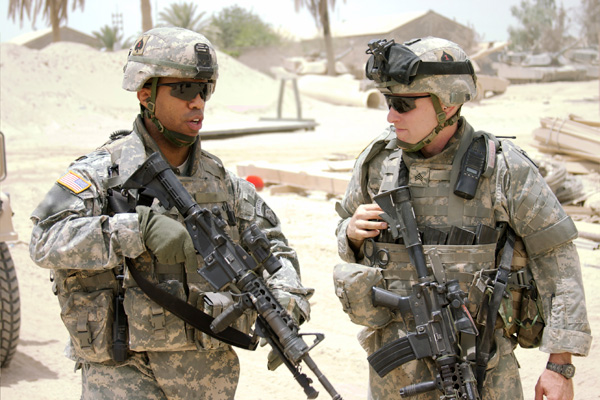- South Texas Students Meet Accordion Music Icons Los Tigres Del Norte In Edinburg Thanks To Khs America/Hohner Alianza Académica Initiative
- Fragile Planet Offers a Nighttime Wildlife Experience
- Falcons Soccer Off & Running
- Cameron County Receives Funds to Improve Two Parks
- Falcons Complete First Half of 32-6A
- School District to Help out Victims of California Wildfires
- Sand Castle Days Continued Despite Unexpected Weather
- Ready for District
- Discussion of Garbage Dumpster Rates, Agreements Between State & City on Highway Regulations, and More
- 31st Annual Shrimp Cook-Off is Right Around the Corner
Study: Military Service Improves Race Relations
- Updated: September 11, 2015
by Eric Galatas
AUSTIN, Texas – When members of the U.S. military leave the service, they tend to settle in more diverse neighborhoods than civilians of the same race, according to a new study from the University of Connecticut and Brigham Young University.
Mary Fischer, the report’s co-author and an associate professor, points out the military,which is highly integrated, provides a context where different racial groups routinely work together as equals.
“Through actual experience with other groups you interacting in situations where you’re a peer,” she says. “These types of experiences tend to break down stereotypes we have about other groups.”

An African American soldier and white soldier working together. Photo: Rockfinder.
Fischer notes, since people join the military for reasons other than diversity, decisions on where to live after service is a strong test of the premise that prolonged inter-racial contact has a positive effect on race relations.
The report found U.S. cities remain highly segregated by race despite several decades of laws against discrimination in housing and lending. Fischer notes one reason segregation continues to be an issue is many non-military whites grow up in homogeneous communities and are more prone to stereotypes. She says the study’s findings show integration works.
“Segregation has deep implications,” says Fischer. “When people have limited options they end up in the criminal justice system, when they instead could be reaching their potential and be gainfully employed and contributing more to society.”
Fischer adds the study, which compared 13 million home mortgage loans from 2008 to 2013 across 98 metropolitan areas, is one of the largest examinations of residential integration among white, black and Latino homeowners.
